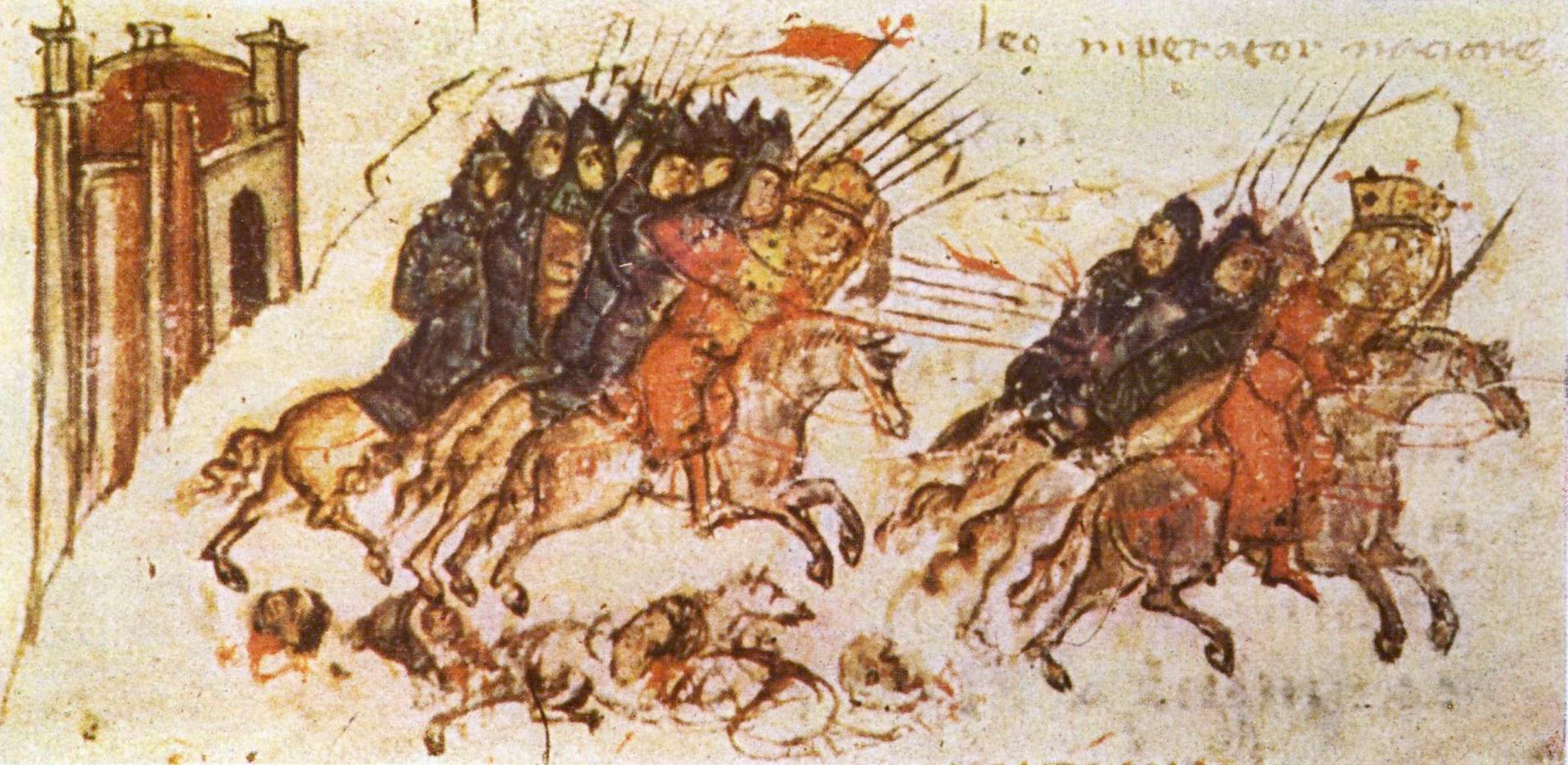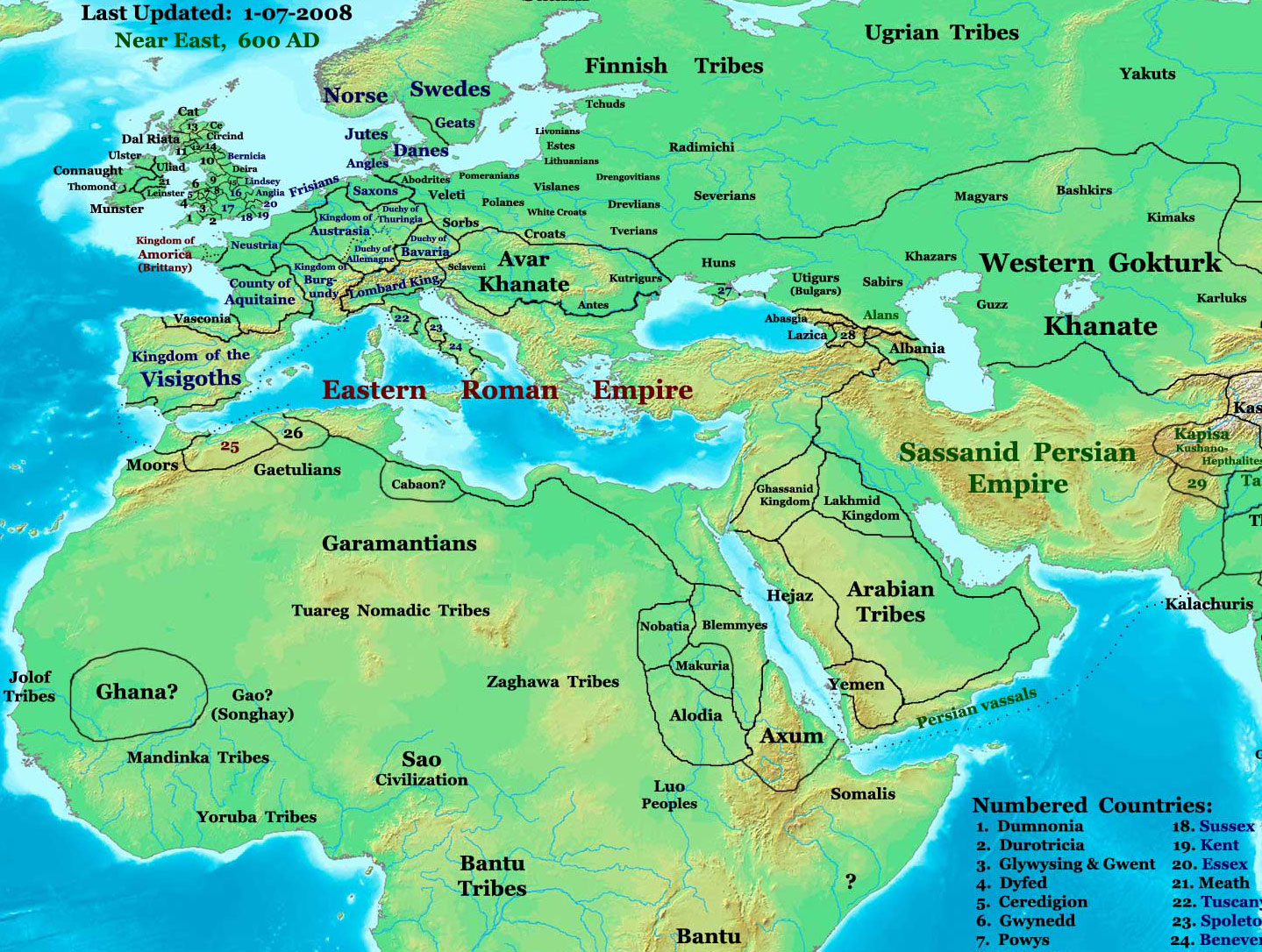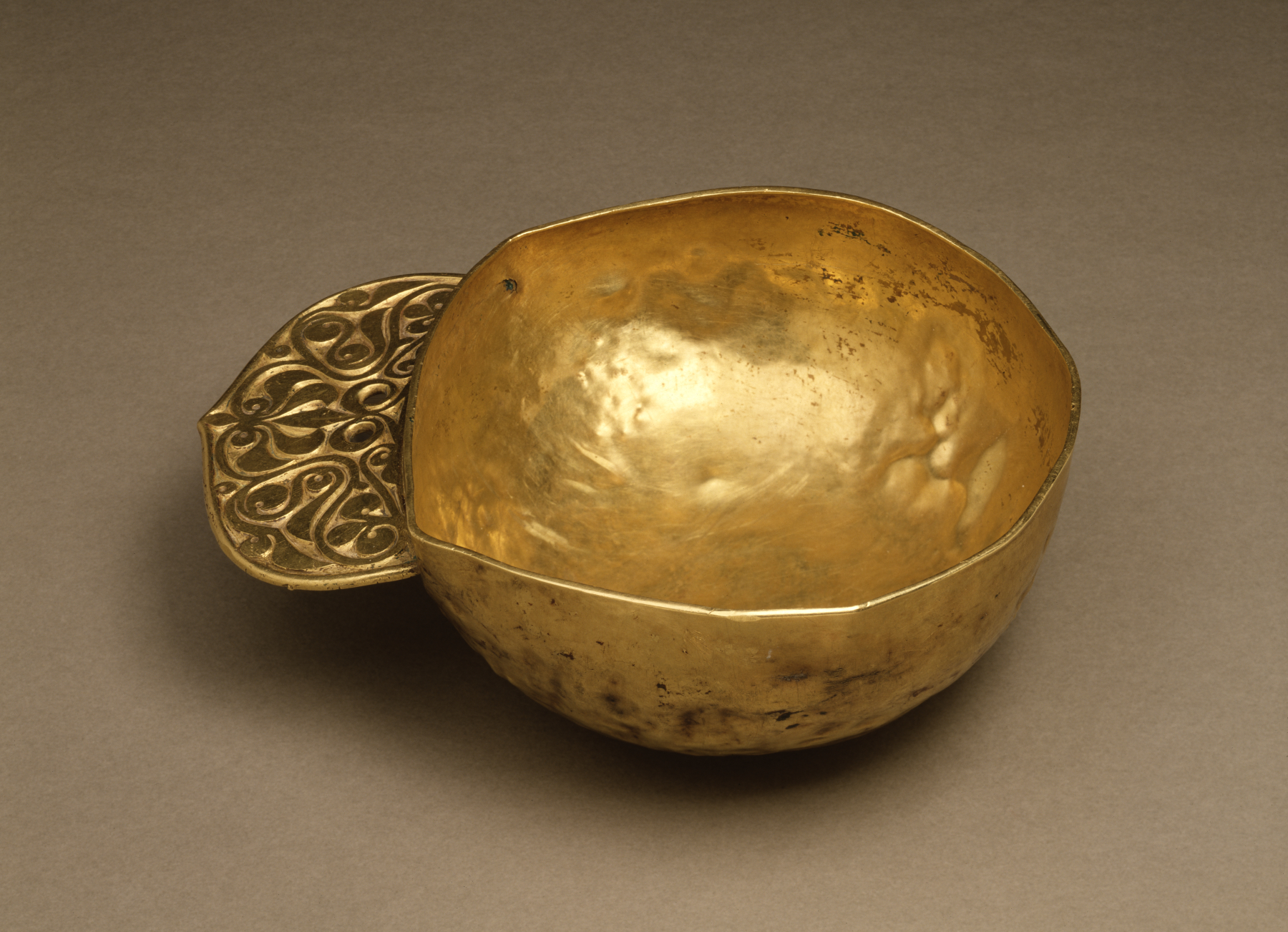|
Saragurs
The Saragurs or Saraguri (, , Šarağurs) were a Turkic nomadic tribe mentioned in the 5th and 6th centuries. They may be the Sulujie (蘇路羯, ''suoluo-kjɐt'') mentioned in the Chinese '' Book of Sui''. They originated from Western Siberia and the Kazakh steppes, from where they were displaced north of the Caucasus by the Sabirs. Around 463 AD, the Akatziri and other tribes that had been part of the Hunnic union were attacked by the Saragurs, one of the first Oghur tribes that entered the Pontic–Caspian steppe as the result of migrations set off in Inner Asia by the Uar attacking the Kidara (a sub-group of the Xiyon). The Akatziri had lived north of the Black Sea, west of Crimea. According to Priscus, in 463 Ernakh and Dengizich sent the representatives of Saragurs, Oghurs (or Urogi, perhaps a Byzantine error for Uyghurs) and Onogurs to the Emperor in Constantinople, and explained they had been driven out of their homeland by the Sabirs, who had been attacked by the ... [...More Info...] [...Related Items...] OR: [Wikipedia] [Google] [Baidu] |
Akatziri
The Akatziri, Akatzirs or Acatiri (, , , ; ) were a tribe that lived north of the Black Sea, though the Crimean city of Cherson seemed to be under their control in the sixth century. Jordanes ( 551) called them a mighty people, not agriculturalists but cattle-breeders and hunters. Their ethnicity is undetermined: the 5th-century historian Priscus describes them as ethnic () Scythians, but they are also referred to as Huns (''Akatiri Hunni''). Their name has also been connected to the Agathyrsi. However, according to E. A. Thompson, any conjectured connection between the Agathyrsi and the Akatziri should be rejected outright. History Roman emperor Theodosius II () sent an envoy to the Akatziri trying to detach them from their alliance with the Hunnic ruler Attila (435–453), an effort made to stir up fighting which also ensued. In 447 or 448 the Huns successfully campaigned against the Akatziri. In 448 or 449, as Priscus recounts " Onegesius along with the eldest of Attila' ... [...More Info...] [...Related Items...] OR: [Wikipedia] [Google] [Baidu] |
Bulgars
The Bulgars (also Bulghars, Bulgari, Bolgars, Bolghars, Bolgari, Proto-Bulgarians) were Turkic peoples, Turkic Nomad, semi-nomadic warrior tribes that flourished in the Pontic–Caspian steppe and the Volga region between the 5th and 7th centuries. They became known as Eurasian nomads, nomadic equestrians in the Volga-Ural region, but some researchers trace Bulgar ethnic roots to Central Asia. During their westward migration across the Eurasian Steppe, the Bulgar tribes absorbed other tribal groups and cultural influences in a process of ethnogenesis, including Iranian peoples, Iranic, Finno-Ugric peoples, Finno-Ugric, and Huns, Hunnic tribes. The Bulgars spoke a Turkic languages, Turkic language, the Bulgar language of the Oghur languages, Oghuric branch. They preserved the military titles, organization, and customs of Eurasian steppes as well as pagan shamanism and belief in the sky deity Tengri, Tangra. The Bulgars became semi-sedentary during the 7th century in the Pontic- ... [...More Info...] [...Related Items...] OR: [Wikipedia] [Google] [Baidu] |
Turkic Tribal Confederations
The Turkic term ''oğuz'' or ''oğur'' (in z- and r-Turkic, respectively) is a historical term for "military division, clan, or tribe" among the Turkic peoples. With the Mongol invasions of 1206–21, the Turkic khaganates were replaced by Mongol or hybrid Turco-Mongol confederations, where the corresponding military division came to be known as '' orda''. Background The 8th-century Kul Tigin stela has the earliest instance of the term in Old Turkic epigraphy: ''Toquz Oghuz'', the "nine tribes". Later the word appears often for two largely separate groups of the Turkic migration in the early medieval period, namely: * Onogur ("ten tribes") * Utigurs * Kutrigurs * Uyghur * Saragurs The stem ''uq-, oq-'' "kin, tribe" is from a Proto-Turkic ''*uk''. The Old Turkic word has often been connected with ''oq'' "arrow"; Pohl (2002) in explanation of this connection adduces the Chinese ''T'ang-shu'' chronicle, which reports: "the khan divided his realm into ten tribes. To the l ... [...More Info...] [...Related Items...] OR: [Wikipedia] [Google] [Baidu] |
Uar (tribe)
The Pannonian Avars ( ) were an alliance of several groups of Eurasian nomads of various origins. The peoples were also known as the Obri in the chronicles of the Rus' people, Rus, the Abaroi or Varchonitai (), or Pseudo-Avars in Byzantine Empire, Byzantine sources, and the Apar () to the Göktürks. They established the Avar Khaganate, which spanned the Pannonian Basin and considerable areas of Central Europe, Central and Eastern Europe from the late 6th to the early 9th century. The name Pannonian Avars (after the area in which they settled) is used to distinguish them from the Avars (Caucasus), Avars of the Caucasus, a separate people with whom the Pannonian Avars may or may not have had links. Although the name ''Avar'' first appeared in the mid-5th century, the Pannonian Avars entered the historical scene in the mid-6th century, on the Pontic–Caspian steppe as a people who wished to escape the rule of the Göktürks. They are probably best known for their invasions and de ... [...More Info...] [...Related Items...] OR: [Wikipedia] [Google] [Baidu] |
Kutrigurs
The Kutrigurs were a Turkic nomadic equestrian tribe who flourished on the Pontic–Caspian steppe in the 6th century AD. To their east were the similar Utigurs and both possibly were closely related to the Bulgars. They warred with the Byzantine Empire and the Utigurs. Towards the end of the 6th century they were absorbed by the Pannonian Avars under pressure from the Türks. Etymology The name ''Kutrigur'', also recorded as ''Kwrtrgr'', ''Κουτρίγουροι'', ''Κουτούργουροι'', ''Κοτρίγουροι'', ''Κοτρίγοροι'', ''Κουτρίγοροι'', ''Κοτράγηροι'', ''Κουτράγουροι'', ''Κοτριαγήροι'', has been suggested as a metathecized form of Turkic ''*Toqur- Oğur'', with ''*quturoğur'' meaning "nine Oğur (tribes)". David Marshall Lang derived it from Turkic ''kötrügür'' (conspicuous, eminent, renowned). Few scholars support theories deriving the Kutrigurs from the Guti/Quti and the Utigurs from the Ud ... [...More Info...] [...Related Items...] OR: [Wikipedia] [Google] [Baidu] |
Pannonian Avars
The Pannonian Avars ( ) were an alliance of several groups of Eurasian nomads of various origins. The peoples were also known as the Obri in the chronicles of the Rus' people, Rus, the Abaroi or Varchonitai (), or Pseudo-Avars in Byzantine Empire, Byzantine sources, and the Apar () to the Göktürks. They established the Avar Khaganate, which spanned the Pannonian Basin and considerable areas of Central Europe, Central and Eastern Europe from the late 6th to the early 9th century. The name Pannonian Avars (after the area in which they settled) is used to distinguish them from the Avars (Caucasus), Avars of the Caucasus, a separate people with whom the Pannonian Avars may or may not have had links. Although the name ''Avar'' first appeared in the mid-5th century, the Pannonian Avars entered the historical scene in the mid-6th century, on the Pontic–Caspian steppe as a people who wished to escape the rule of the Göktürks. They are probably best known for their invasions and de ... [...More Info...] [...Related Items...] OR: [Wikipedia] [Google] [Baidu] |
Sabir People
The Sabirs (Savirs, Suars, Sawar, Sawirk among others; ,) were a nomadic Turkic equestrian people who lived in the north of the Caucasus beginning in the late-5th–7th century, on the eastern shores of the Black Sea, in the Kuban area, and possibly came from Western Siberia. They were skilled in warfare, used siege machinery, had a large army (including women) and were boat-builders. They were also referred to as Huns, a title applied to various Eurasian nomadic tribes in the Pontic-Caspian Steppe during late antiquity. Sabirs led incursions into Transcaucasia in the , but quickly began serving as soldiers and mercenaries during the Byzantine–Sasanian Wars on both sides. Their alliance with the Byzantines laid the basis for the later Khazar-Byzantine alliance. Etymology Gyula Németh and Paul Pelliot considered Turkic etymology for Säbir / Sabïr / Sabar / Säβir / Sävir / Savar / Sävär / Sawār / Säwēr from the root *''sap-'' 'to go astray', i.e. the 'wanderers, nom ... [...More Info...] [...Related Items...] OR: [Wikipedia] [Google] [Baidu] |
Onogurs
The Onoghurs, Onoğurs, or Oğurs (Ὀνόγουροι, Οὔρωγοι, Οὔγωροι; Onογurs, Ογurs; "ten tribes", "tribes") were a group of Turkic nomadic equestrians who flourished in the Pontic–Caspian steppe and the Volga region between the 5th and 7th centuries, and spoke an Oghuric language. Etymology The name ''Onoğur'' is widely thought to derive from ''On-Oğur'' "ten Oğurs (tribes)". Modern scholars consider Turkic terms for tribe ''oğuz'' and ''oğur'' to be derived from Turkic ''*og/uq'', meaning "kinship or being akin to". The terms initially were not the same, as ''oq/ogsiz'' meant "arrow", while ''oğul'' meant "offspring, child, son", ''oğuš/uğuš'' was "tribe, clan", and the verb ''oğša-/oqša'' meant "to be like, resemble". The modern name of "Hungary" (see name of Hungary) is usually believed to be derived from On-Oğur (> (H)Ungari). Language The Onoghuric or Oghuric languages are a branch of the Turkic languages. Some scholars suggest ... [...More Info...] [...Related Items...] OR: [Wikipedia] [Google] [Baidu] |
Turkic Peoples
Turkic peoples are a collection of diverse ethnic groups of West Asia, West, Central Asia, Central, East Asia, East, and North Asia as well as parts of Europe, who speak Turkic languages.. "Turkic peoples, any of various peoples whose members speak languages belonging to the Turkic subfamily...". "The Turkic peoples represent a diverse collection of ethnic groups defined by the Turkic languages." According to historians and linguists, the Proto-Turkic language originated in Central-East Asia, potentially in the Altai-Sayan region, Mongolia or Tuva.: "The ultimate Proto-Turkic homeland may have been located in a more compact area, most likely in Eastern Mongolia": "The best candidate for the Turkic Urheimat would then be northern and western Mongolia and Tuva, where all these haplogroups could have intermingled, rather than eastern and southern Mongolia..." Initially, Proto-Turkic speakers were potentially both hunter-gatherers and farmers; they later became nomadic Pastoralism, ... [...More Info...] [...Related Items...] OR: [Wikipedia] [Google] [Baidu] |
Sabirs
The Sabirs (Savirs, Suars, Sawar, Sawirk among others; ,) were a nomadic Turkic equestrian people who lived in the north of the Caucasus beginning in the late-5th–7th century, on the eastern shores of the Black Sea, in the Kuban area, and possibly came from Western Siberia. They were skilled in warfare, used siege machinery, had a large army (including women) and were boat-builders. They were also referred to as Huns, a title applied to various Eurasian nomadic tribes in the Pontic-Caspian Steppe during late antiquity. Sabirs led incursions into Transcaucasia in the , but quickly began serving as soldiers and mercenaries during the Byzantine–Sasanian Wars on both sides. Their alliance with the Byzantines laid the basis for the later Khazar-Byzantine alliance. Etymology Gyula Németh and Paul Pelliot considered Turkic etymology for Säbir / Sabïr / Sabar / Säβir / Sävir / Savar / Sävär / Sawār / Säwēr from the root *''sap-'' 'to go astray', i.e. the 'wanderers, nom ... [...More Info...] [...Related Items...] OR: [Wikipedia] [Google] [Baidu] |
Black Sea
The Black Sea is a marginal sea, marginal Mediterranean sea (oceanography), mediterranean sea lying between Europe and Asia, east of the Balkans, south of the East European Plain, west of the Caucasus, and north of Anatolia. It is bounded by Bulgaria, Georgia (country), Georgia, Romania, Russia, Turkey, and Ukraine. The Black Sea is Inflow (hydrology), supplied by major rivers, principally the Danube, Dnieper and Dniester. Consequently, while six countries have a coastline on the sea, its drainage basin includes parts of 24 countries in Europe. The Black Sea, not including the Sea of Azov, covers , has a maximum depth of , and a volume of . Most of its coasts ascend rapidly. These rises are the Pontic Mountains to the south, bar the southwest-facing peninsulas, the Caucasus Mountains to the east, and the Crimean Mountains to the mid-north. In the west, the coast is generally small floodplains below foothills such as the Strandzha; Cape Emine, a dwindling of the east end ... [...More Info...] [...Related Items...] OR: [Wikipedia] [Google] [Baidu] |
Wiesbaden
Wiesbaden (; ) is the capital of the German state of Hesse, and the second-largest Hessian city after Frankfurt am Main. With around 283,000 inhabitants, it is List of cities in Germany by population, Germany's 24th-largest city. Wiesbaden forms a conurbation with a population of around 500,000 with the neighbouring city of Mainz. This conurbation is in turn embedded in the Rhine-Main, Rhine-Main Metropolitan Region—Germany's second-largest metropolitan region after Rhine-Ruhr—which also includes the nearby cities of Frankfurt am Main, Darmstadt, Offenbach am Main, and Hanau, and has a combined population exceeding 5.8 million. The city is located on the Rhine (Upper Rhine), at the foothills of the Taunus, opposite the Rhineland-Palatine capital of Mainz, and the city centre is located in the wide valley of the small Salzbach (Wiesbaden), Salzbach stream. Wiesbaden lies in the Rheingau (wine region), Rheingau wine-growing region, one of Germany's List of German wine regions, ... [...More Info...] [...Related Items...] OR: [Wikipedia] [Google] [Baidu] |






